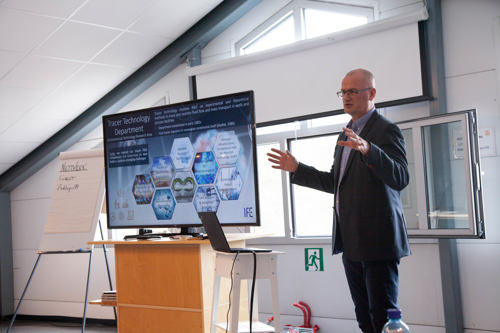- It is not necessarily dangerous even though it smells bad
The bad smell from the industry does not necessarily correspond to toxic emissions. Better communication with neighbors and social responsibility are some of the challenges that process industry companies want to work on.
Last week, both the industry, knowledge institutions, and the support system gathered to discuss some of the challenges the industry is facing. Social responsibility was high on the agenda, and the companies' desire to inform neighbors that a little smell does not necessarily mean there is a dangerous emission.
- It is not necessarily dangerous even though it smells bad, says Nadia Handeland, responsible for expertise in the Eyde Cluster.
Presenting their improvements
During the gathering, some of the companies also presented the results of purification plants they have received funding for, which have resulted in reduced emissions. GE, Glencore Nikkelverk, and Elkem presented some of their improvements.
- New purification methods in the industry often lead to new emissions that need to be managed, such as amines from CO2 capture. The green shift poses new challenges at all levels, says Frank Spetland, leader of the R&D group in the Eyde Cluster.
Responding to neighbor complaints
Therefore, Glencore has personnel on standby to respond if neighbors complain about the smell.
- The raw materials from alternative sources, such as those containing more sulfur, due to the war, emit a stronger odor during production, says Spetland.
Difficult to measure at low levels
Measuring the levels of toxic substances in emissions is not always easy when dealing with extremely low levels.
- Meeting the requirements for what emissions should contain and should not contain is challenging. Sometimes the levels are so low that it is difficult to measure them, says Handeland.
Read more about mapping and measuring diffuse emissions.
Read more about NORCE and diffuse emissions.
HVA SKJER
Se hele kalenderen >-
Agder Cyber Security Forum
Noroff, Tordenskioldsgate 9, Kristiansand -
Agder Symbiose - siste morgenmøte før jul
Teams -
Frokostmøte om digitale produktpass
Teams -
Eydeclusters R&D day
Dyreparken, Sjørøverteateret -
Digital formiddagskaffe: Grønn plattform = Grønn omstilling i næringslivet. Funker det?
Teams


